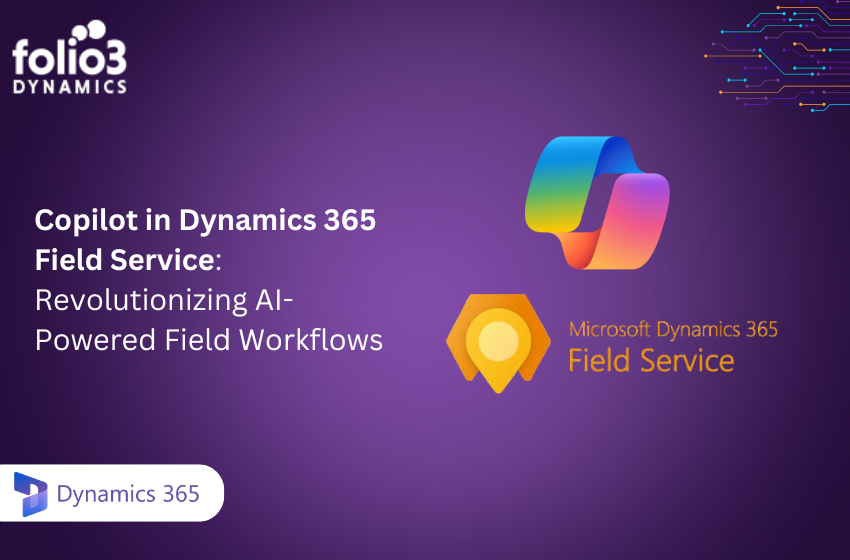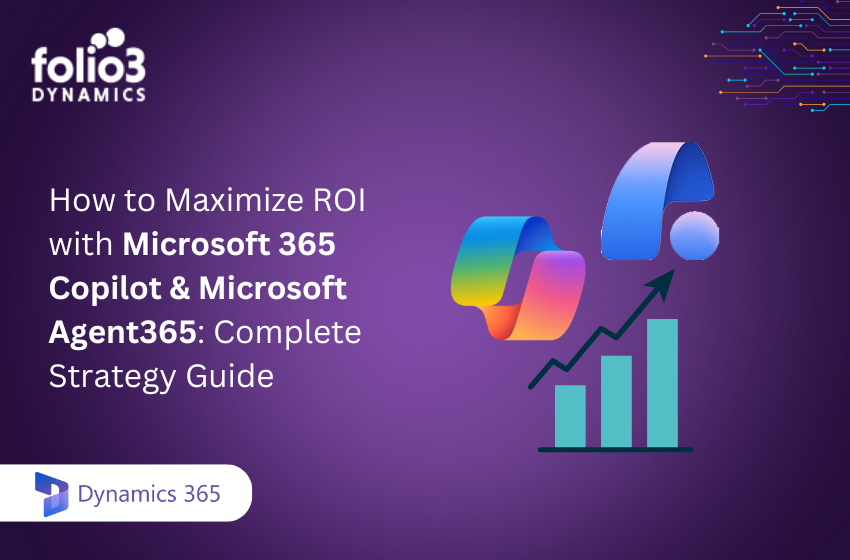In today’s fast-paced and data-driven business landscape, supply chain management has become more intricate than ever before. Supply chain analytics software has emerged as a vital tool in streamlining operations, reducing costs, and improving overall efficiency.
If you, too, are interestinin learning about supply chain analytics software and how can it benefit your business operations, continue to read. Below we will dive deep into the world of supply chain analytics software, understanding what it is, why it matters, and the top solutions that can help you take control of your supply chain.
So, what’s the wait? Let’s get started!
What is Supply Chain Analytics Software?
At its core, supply chain analytics software is designed to collect, analyze, and interpret the vast amounts of data generated across your supply chain operations. This software leverages data-driven insights to optimize decision-making and enhance the overall efficiency of your supply chain.
The Role of Data Analysis in Supply Chain Management
In traditional supply chain management, decision-making was often based on experience and intuition. However, with the advent of analytics software, businesses can harness the power of data to make informed choices. It helps in forecasting demand, tracking inventory levels, and understanding supplier performance.
The Potential Benefits of Supply Chain Analytics Software
Supply chain analytics software offers a wide array of potential benefits, including:
- Cost Reduction: Through optimized logistics, supply chain analytics can help in reducing transportation costs, minimizing waste, and ensuring better use of resources.
- Improved Decision-Making: The software provides data-driven insights that enable better decision-making, from demand forecasting to inventory management.
- Meeting Customer Expectations: Faster order fulfillment, reduced stockouts, and on-time deliveries lead to higher customer satisfaction.
Why Supply Chain Analytics Software Matters
Understanding the importance of supply chain analytics software is crucial for businesses seeking to gain a competitive edge in today’s rapidly changing marketplace. This section will delve into the key reasons why supply chain analytics software is not just a tool but a strategic asset.
Improving Operational Efficiency
Operational efficiency is at the core of effective supply chain management. Businesses that can operate more efficiently can offer competitive prices and meet customer demands promptly. Here’s how supply chain analytics software plays a pivotal role:
Reducing Costs through Optimized Logistics:
- Supply chain analytics software offers a comprehensive view of your logistics operations, helping you identify the most cost-effective routes and transportation methods.
- By optimizing transportation and minimizing unnecessary costs, your business can significantly reduce operating expenses.
Streamlining Processes and Reducing Waste:
- Through data analysis, the software helps in streamlining supply chain processes. This translates to reduced waste, more efficient use of resources, and faster order fulfillment.
- Identifying and eliminating bottlenecks or inefficiencies in your supply chain processes can lead to substantial cost savings.
Minimizing Stockouts and Overstocking:
- One of the primary challenges in supply chain management is striking the right balance in inventory levels.
- Supply chain analytics software empowers businesses to forecast demand accurately and optimize inventory, resulting in minimized stockouts and overstocking. This not only reduces carrying costs but also ensures customer satisfaction by avoiding product shortages.
Enhancing Decision-Making
The ability to make well-informed decisions is vital in a rapidly changing business environment. Supply chain analytics software provides the necessary data-driven insights to make more precise and effective decisions:
Data-Driven Insights for Better Decision-Making:
Through advanced analytics, supply chain software processes vast amounts of data to offer actionable insights. Whether you’re making decisions related to procurement, production, or distribution, having access to real-time, data-driven insights ensures that choices are made based on factual information rather than intuition.
Proactive Issue Identification and Resolution:
- Supply chain disruptions can occur at any moment, whether due to weather-related issues, supplier problems, or other unexpected events.
- Analytics software can monitor the supply chain in real-time and detect issues as they arise. This allows businesses to proactively address problems, preventing costly disruptions.
Meeting Customer Expectations
Meeting customer expectations is a key driver of success in today’s competitive marketplace. Supply chain analytics software plays a critical role in ensuring that businesses can deliver on customer demands:
Faster Order Fulfillment and On-Time Deliveries:
- With efficient supply chain operations powered by analytics, businesses can fulfill customer orders more rapidly and ensure on-time deliveries.
- Faster order fulfillment results in higher customer satisfaction and can lead to repeat business and positive word-of-mouth.
Improved Product Availability:
- Running out of stock or having too much stock can be equally detrimental to a business.
- Supply chain analytics software optimizes inventory management, ensuring that products are available when customers want them. This reduces stockouts and backorders and enhances the overall customer experience.
The Top Supply Chain Analytics Software Solutions
Selecting the right supply chain analytics software solution is a critical decision for businesses seeking to optimize their supply chain operations. In this section, we’ll explore some of the best supply chain analytics software solutions that have demonstrated their prowess in transforming supply chains across industries.
1. SAP Integrated Business Planning (IBP)
Overview:
SAP Integrated Business Planning (IBP) is a comprehensive solution that enables businesses to create a unified and responsive supply chain. It offers real-time insights, scenario modeling, and predictive analytics.
Key Features:
- Demand and supply planning
- Inventory optimization
- Sales and operations planning
- Advanced analytics and reporting
Benefits:
- Improved supply chain visibility
- Enhanced collaboration among teams
- Better demand forecasting
- Inventory cost reduction
2. Oracle SCM Cloud
Overview:
Oracle’s Supply Chain Management (SCM) Cloud is a cloud-based solution that provides end-to-end visibility, automation, and optimization of supply chain operations. It offers features such as inventory management, order fulfillment, and demand planning.
Key Features:
- Inventory and order management
- Demand forecasting
- Supplier portal
- Supply chain analytics
Benefits:
- Improved order accuracy
- Efficient procurement and supplier collaboration
- Enhanced inventory control
- Real-time supply chain insights
3. IBM Supply Chain Insights
Overview:
IBM Supply Chain Insights leverages artificial intelligence (AI) and blockchain technology to provide end-to-end visibility into supply chain processes. It offers tools for predictive analytics, risk management, and order fulfillment.
Key Features:
- AI-powered insights
- Real-time visibility
- Blockchain for transparency
- Risk and disruption management
Benefits:
- Proactive issue identification
- Improved risk management
- Enhanced trust through blockchain
- Real-time performance monitoring
4. Kinaxis RapidResponse
Overview:
Kinaxis RapidResponse is a supply chain planning platform that offers a single source of truth for supply chain data. It provides tools for demand planning, inventory management, and collaborative decision-making.
Key Features:
- Demand forecasting and planning
- Inventory optimization
- What-if scenario analysis
- Supplier collaboration
Benefits:
- Faster response to supply chain disruptions
- Improved demand forecast accuracy
- Enhanced collaboration with suppliers
- Better inventory control
5. Tableau
Overview:
Tableau is a data visualization and business intelligence platform that can be used for supply chain analytics. It enables users to create interactive and shareable dashboards to gain insights from supply chain data.
Key Features:
- Data visualization and reporting
- Dashboards and interactive analytics
- Integration with various data sources
- Predictive analytics
Benefits:
- Data-driven decision-making
- Real-time supply chain visibility
- Customizable dashboards
- Integration with existing systems
How to Choose the Right Supply Chain Analytics Software?
Selecting the right supply chain analytics software is a crucial decision for businesses looking to enhance their supply chain operations. The choice you make can significantly impact your efficiency, cost-effectiveness, and ability to meet customer demands. To ensure you make the right decision, follow these steps in the selection process.
Identifying Your Needs
Before embarking on the selection process, take the time to assess your current supply chain challenges. Understanding where your operations face hurdles is the first step toward identifying the right solution.
- Demand Forecasting: Is your demand forecasting accuracy below par, resulting in overstocking or stockouts?
- Inventory Management: Are you struggling to maintain an optimal inventory level due to inefficient processes?
- Supplier Collaboration: Do you face issues with supplier collaboration and order management?
- Transportation Management: Is your transportation and logistics management costing you more than it should?
Defining Your Goals and Objectives
To choose the right software, you must define your goals and objectives clearly. What do you want to achieve with supply chain analytics software? Consider the following questions:
- Cost Reduction: Are you primarily looking to reduce costs throughout your supply chain?
- Customer Satisfaction: Is enhancing customer satisfaction and order fulfillment a top priority?
- Efficiency Improvement: Do you want to streamline your supply chain processes for better efficiency?
- Data-Driven Decision-Making: Are you aiming to make more informed, data-driven decisions regarding your supply chain?
Assessing Features and Integration
It’s essential that the supply chain analytics software you choose seamlessly integrates with your existing systems. Incompatibility can lead to disruptions in operations and increased implementation costs. Consider the following factors:
- ERP Integration: Does the software integrate with your ERP system to ensure data consistency and unified operations?
- Compatibility with Legacy Systems: If you have legacy systems, can the software accommodate and communicate with them?
Scalability and Flexibility
Consider the scalability and flexibility of the software. As your business grows, will the software be able to adapt and scale with you? This is crucial for long-term success and avoiding the need to switch software as your needs evolve.
- Scalability: Can the software handle your growth without a hitch?
- Flexibility: Is the software flexible enough to accommodate changes in your supply chain processes and business structure?
Data Security and Compliance
Data security is paramount in supply chain operations, especially considering the sensitive information involved. Ensure that the software meets industry standards and regulatory requirements for data security and compliance.
- Data Encryption: Does the software use encryption to protect sensitive data?
- Compliance with Regulations: Is the software compliant with industry regulations and data protection laws?
User-Friendly Interface and Training
An intuitive and user-friendly interface is essential for the successful adoption of supply chain analytics software. It ensures that your team can quickly learn and make the most of the software’s capabilities.
- User Interface Design: Is the software’s interface designed with user-friendliness in mind?
- Ease of Navigation: Are the software’s features easy to find and use?
Availability of Training and Support
Investigate the availability of training and support from the software provider. Adequate training and ongoing support are crucial for a smooth onboarding process and effective use of the software.
- Training Materials: Does the provider offer training materials, documentation, or tutorials?
- Support Channels: Are there multiple support channels available, such as phone, email, or chat support?
Implementing Supply Chain Analytics Software Successfully
The successful implementation of supply chain analytics software is a pivotal step in realizing the full potential of this transformative tool. To ensure a seamless and effective integration, businesses should follow a well-structured plan. Here’s a comprehensive guide to implementing supply chain analytics software successfully:
Planning and Implementation
Establish a dedicated project team responsible for the successful implementation of the software. This team should include members from various departments, including IT, supply chain, and management.
- Project Manager: Appoint a project manager who will oversee the entire implementation process, ensuring that tasks are completed on schedule.
- IT Experts: Include IT professionals who can manage the technical aspects of the implementation, such as software integration and data migration.
- Supply Chain Experts: Having supply chain experts on the team will ensure that the software aligns with your specific supply chain needs.
- Management Representatives: Include representatives from top management who can provide guidance and make key decisions.
Data Migration and Integration
Ensure a smooth transition by planning data migration and integration strategies. All historical and real-time data must seamlessly flow into the new system.
- Data Assessment: Begin by assessing the quality and integrity of your existing data. Identify areas that may need improvement before migration.
- Data Mapping: Create a clear map of how data from your current systems will be integrated into the new software.
- Testing Data Migration: Before migrating all data, conduct testing to ensure that the process will be error-free during the actual migration.
Testing and Quality Assurance
Thoroughly test the software to identify and rectify any issues before it goes live. Quality assurance ensures that the software functions as expected.
- User Testing: Involve end-users in the testing process to gather feedback on usability and identify potential issues.
- Quality Assurance Checks: Conduct a series of quality assurance checks to ensure that the software is bug-free and performs as intended.
- Scalability Testing: Test the software’s performance under varying workloads to ensure it can handle different operational scenarios.
Real-Time Tracking and Reporting
Once the software is operational, implement real-time tracking and reporting to monitor supply chain performance. This will help in immediate issue identification.
- Real-Time Dashboards: Use the software’s real-time dashboards to track key performance indicators (KPIs) and supply chain metrics.
- Alert Systems: Set up alert systems that notify relevant personnel when specific supply chain thresholds are exceeded.
- Custom Reports: Customize reports to provide insights that are most relevant to your business.
Continuous Improvement and Fine-Tuning
Regularly evaluate and fine-tune the software to adapt to changing needs and optimize performance further. Continuous improvement is essential for long-term success.
- Performance Analysis: Continuously analyze software performance and identify areas for improvement.
- Feedback Loops: Encourage feedback from end-users and make updates based on their suggestions.
- Stay Informed: Stay updated on industry trends and new software features that could enhance your supply chain operations.
Realizing the Benefits of Supply Chain Analytics Software
Supply chain analytics software offers a multitude of benefits to businesses aiming to streamline their operations, cut costs, and enhance customer satisfaction. In this section, we’ll explore the quantifiable improvements that this transformative tool can bring to your supply chain.
Quantifiable Improvements
Case Studies and Success Stories
One of the most compelling ways to understand the benefits of supply chain analytics software is by examining real-world case studies and success stories. These stories showcase the remarkable transformations experienced by businesses that have implemented this technology.
- Cost Reduction: Case studies often highlight significant cost reductions achieved through improved supply chain efficiency and optimized operations.
- Enhanced Customer Satisfaction: Stories may narrate how better order fulfillment and on-time deliveries have resulted in higher customer satisfaction and loyalty.
- Streamlined Operations: Successful businesses may share their experiences of streamlining processes, minimizing waste, and achieving a more agile and efficient supply chain.
Metrics for Measuring Success
To quantify the impact of supply chain analytics software, it’s essential to establish key performance indicators (KPIs) that align with your business goals. These metrics help you measure the software’s success and provide insights into its tangible benefits.
- Cost Reduction Metrics: Monitor metrics related to cost savings, such as reduced transportation expenses, inventory carrying costs, and overall operational expenses.
- Customer Satisfaction Metrics: Measure customer satisfaction levels through metrics like on-time deliveries, order accuracy, and customer feedback.
- Operational Efficiency Metrics: Evaluate the software’s impact on operational efficiency by monitoring key indicators such as lead times, cycle times, and resource utilization.
Continuous Improvement and Adaptation
The Power of Data-Driven Insights
Supply chain analytics software empowers businesses with data-driven insights that lead to informed and strategic decisions. These insights are a cornerstone of the software’s benefits:
- Data-Backed Decision-Making: By analyzing data, businesses can make decisions based on factual information rather than intuition or guesswork.
- Proactive Issue Identification: The software’s analytics capabilities enable real-time monitoring of the supply chain, allowing for the immediate identification of issues and proactive problem-solving.
Meeting Customer Expectations
Meeting customer expectations is a critical driver of success in today’s competitive marketplace. Supply chain analytics software plays a vital role in ensuring that businesses can meet and even exceed customer demands:
- Faster Order Fulfillment and On-Time Deliveries: Efficient supply chain operations powered by analytics lead to faster order fulfillment and on-time deliveries, resulting in higher customer satisfaction.
- Improved Product Availability: The software’s ability to optimize inventory management ensures that products are consistently available when customers want them, reducing stockouts and backorders.
Conclusion
To sum it up nicely, supply chain analytics software is the driving force behind modern supply chain optimization. By enhancing operational efficiency, facilitating data-driven decision-making, and exceeding customer expectations, businesses can reap the rewards of streamlined supply chain operations and improved cost-effectiveness.
At Folio3, we understand the dynamic landscape of supply chain technology. Connect with us and explore how our supply chain technology solutions can help you achieve your supply chain goals and stay ahead in today’s competitive market.


